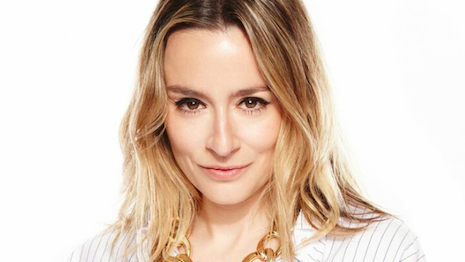 Bill Gates being interviewed, with his impressive bookcases in the background. Bookcases have become the new background accessory in the video-run COVID-19 era, reflecting both aspirations and affectations. Image credit: Bookcase Credibility
Bill Gates being interviewed, with his impressive bookcases in the background. Bookcases have become the new background accessory in the video-run COVID-19 era, reflecting both aspirations and affectations. Image credit: Bookcase Credibility
By Ana Andjelic
“What you say is not as important as the bookcase behind you,” is a tagline of a Twitter account titled Bookcase Credibility. Bookcase Credibility was launched in April 2020 and has since amassed more than 105,000 followers.
Bookcases are the most recent aspiration. They are more socially acceptable as a Zoom background than lurking pools, private gardens or antiques. They also signal the somewhat accessible privilege of knowledge. So does the handmade furniture, artisanal rugs and homeware, and plants.
Refined, not fined
When it comes to luxury aspiration at the moment, the most important thing is that it is socially approved. We are allowed to aspire, as long as it does not increase our chances of being cancelled.
This socio-economic climate led the affluent to retreat into their privacy even more. It also led luxury brands to retreat into their own past. Both are safer places than the world today.
The result is a distinct spatio-temporal continuum of the luxury aspiration.
First, it revolves around anything that signals one’s refined and cultivated taste in the selection of objects with which they surround themselves. Those objects should not be visibly expensive, but should visibly tell a story.
Second, it focuses on what we do with our time.
Aspiration is to have a Peloton and a Mirror and exercise religiously.
Peloton’s sales in April jumped 66 percent year over year to $524.6 million. Tonal sales tripled in March.
It is aspirational to get ingredients from Michelin-starred restaurant food suppliers and become a master chef – or have your chef make an Eleven Madison-worthy dinner.
Having a hairstylist, a massage therapist, a colonic specialist, a pedicurist or a personal trainer come into our own home is a luxury aspiration. The convenience and privacy of enjoying these services safely and away from strangers will create a habit for many.
If recent campaigns by Chanel or Moët & Chandon are any indicator, luxury brands are at the moment digging deep into their own geography and people to tell their story.
No one wants to see the displays of extravagant living, massive apartments, yacht sunsets or luxury hotels and resorts. Instead, luxury brands turned to bolstering their eco credentials and rapidly pivoting to signaling their environmental values.
The best way to convey environmental values is to show the original, hand-manned vineyard where Moët & Chandon has been made for decades, if not centuries, along with all-natural grape processing that its craftsmen employ.
There is nothing controversial about supporting the local industry and nurturing tradition, even if the ultimate result is something that costs thousands of dollars and makes a good business for the largest global luxury conglomerate.
The good, honest soil featured in the Moët & Chandon’s campaign video makes us forget about the social and economic inequality inherent in luxury.
There are four new rules of driving aspiration for luxury brands.
Rule 1: Stay away from the present. Make raw materials part of your brand identity – like Hermès does – and put forward the story about quality, durability and distinct processes with which these materials are treated.
It is not about fashion, it is about ingredients. The ingredient-first luxury strategy roots a brand in a specific process, location and way of doing things – and far from the current events.
Rule 2: Have a story and stick to it. Be in full control of your own brand world, such as Gucci is, and activate it on your own channels.
Ideally, this world is evergreen and rooted in art, design, beauty, nature, film, dance or one of the indisputable human truths: love, freedom and creativity).
Eighty-five percent of Gucci’s sales come from its own distribution, and the brand currently features Jane Fonda in its “Own the Grid” effort.
Luxury brands are media companies, and have a massive social media footprint and cultural clout to put forward their own curatorial lens, and also to activate their direct channels for commercial purposes.
Rule 3: Acting human is more important than ever. A brand’s loyalists are currently its most valuable customers.
When rules of the luxury aspiration are changing on the fly, it is important to keep those who already love a brand close.
Over-deliver for them through 24/7 access to information, styling advice, immediate delivery and first-look services.
Entertain them through a movie club, as Louis Vuitton did, or through cooking classes, musical performances, or curated selection of everyday objects, such as Dior does. Reach out personally.
Rule 4: Doing good. For the longest time, luxury aspiration was linked with hedonism. While this is still the case, luxury aspiration today has equally to do with doing good in the world: acting responsibly and generously in both their products and their business actions.
This responsibility and generosity can either be in the form of increased eco credentials or supporting artisanal communities, having a cleaner and more transparent supply chain or abolishing discounting.
In terms of aspiration, corporate responsibility today is table stakes, and modern consumers buy from companies who clearly state their values and then walk the walk.
 Ana Andjelic
Ana Andjelic
Named to Forbes CMO Next, Ana Andjelic is a strategy executive and doctor of sociology. She runs a weekly newsletter, The Sociology of Business, and is author of The Business of Aspiration, out from Taylor & Francis in the fall, available for pre-order here. Reach her at andjelicaaa@gmail.com.
